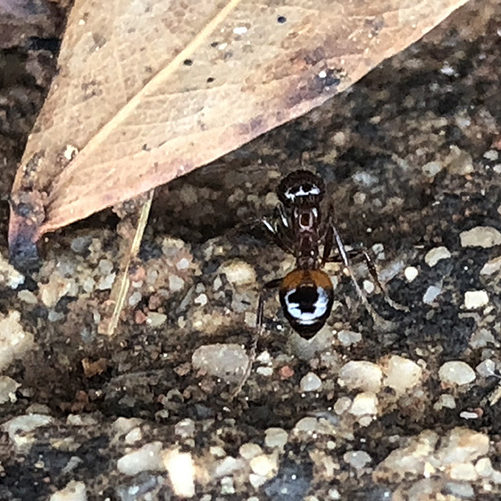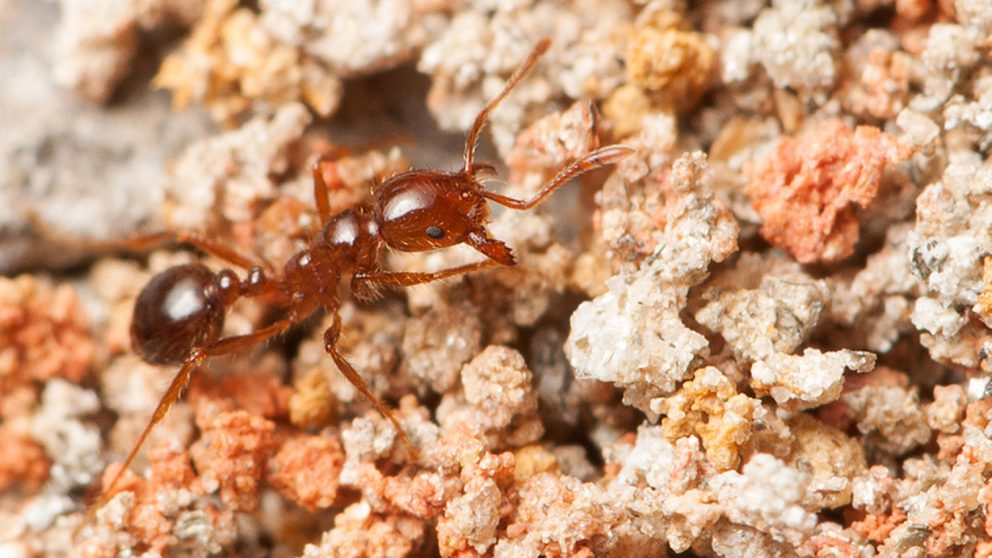Fire ants benefit ecosystems by aerating soil and controlling pests. These insects act as decomposers, breaking down organic material.
Fire ants, often viewed unfavorably due to their painful stings, play crucial ecological roles. By tunneling through the earth, they improve soil quality, enhancing air and water flow. This aeration supports plant growth and fosters healthy garden environments. As natural predators, fire ants help regulate insect populations, including crop-damaging species.
They also consume dead animals, contributing to the nutrient cycle by recycling organic matter back into the soil. Recognizing these benefits helps balance the perception of fire ants, acknowledging their positive impact alongside the challenges they present. Understanding their ecological contributions can lead to more effective and environmentally conscious management strategies for these industrious insects.
Introduction To Fire Ants
Fire ants, known for their fiery sting, are an intriguing species that play a complex role in ecosystems. These small yet impactful creatures are more than just a nuisance; they exhibit fascinating behaviors and serve important ecological functions. We often overlook the positive effects these ants contribute to their environment. Let’s delve into the world of fire ants and discover their hidden benefits.
Native Habitats And General Behavior
Fire ants thrive in warm climates and are most commonly found in regions such as the Southern United States. They prefer sunny locations and can often be seen constructing mounds in open fields. These industrious insects are social creatures, living in large colonies where they work together to support their community. Fire ants are omnivores, eating both plant and animal materials, which makes them key players in balancing the local ecosystem.
- Construction of mounds enhances soil aeration.
- Assist in the decomposition of organic material.
- Predatory nature helps control pests.
Common Misconceptions About Fire Ants
Contrary to popular belief, fire ants are not simply destructive pests. The myth that fire ants are solely harmful is a common misconception. While their sting can be painful, fire ants possess qualities that are beneficial to the environment. They are exceptional soil engineers and play a crucial role in the seed dispersal of many plant species. Additionally, they can even reduce the spread of some invasive species through their competitive nature.
| Misconception | Reality |
|---|---|
| Fire ants are only pests. | They have ecological benefits. |
| Fire ants cause only damage. | They improve soil quality. |
| Fire ants have no predators. | They are part of the food chain. |

Credit: fireants.tennessee.edu
Ecosystem Impact
The “Ecosystem Impact” of fire ants stretches well beyond their fiery sting. Often misunderstood, these tiny creatures play a crucial role in maintaining the health of our environment. Let’s delve into their positive contributions below.
Role In Soil Aeration
Fire ants are nature’s expert tillers. Their daily activities involve tunneling through the soil. This enhances soil structure and promotes air circulation. Better aeration implies roots receive more oxygen, benefiting plant growth.
- Improves water infiltration: Their tunnels allow rainwater to seep deeper.
- Reduces compaction: Loosened soil prevents erosion and runoff.
- Nutrient cycling: Their work helps in decomposing organic matter.
Insect Population Control
Fire ants act as miniature predators in their ecosystems. They consume large quantities of insects and pests. This natural pest control helps maintain a balanced ecosystem. The diet of fire ants includes:
| Pest Type | Impact on Ecosystem |
|---|---|
| Agricultural pests | Reduced crop damage |
| Invasive species | Limits spread |
| Disease carriers | Lowers disease risks |
By hunting and feeding on these pests, fire ants help protect crops and preserve natural habitats.
Agricultural Advantages
Fire ants play a crucial role in sustaining the health of our agricultural environment. Often overlooked, their presence in farms and fields comes with notable benefits. Let’s explore the agricultural advantages of these industrious insects.
Natural Pest Management
Fire ants are natural predators. They hunt and consume various agricultural pests, such as ticks, caterpillars, and boll weevils. This predatory behavior aids in pest control, reducing the need for chemical pesticides. Effective management of pest populations helps preserve crop health and yield.
- Reduces harmful insects
- Minimizes chemical pesticide use
- Supports crop protection
Potential Uses In Organic Farming
Organic farming thrives on eco-friendly practices. Fire ants could become integral to these natural systems. As they patrol crops and predate on troublesome pests, they help maintain the organic status of a farm.
| Organic Farming Need | Fire Ant Contribution |
|---|---|
| Natural Pest Control | Fire ants fulfill this by eliminating pests without chemicals. |
| Soil Aeration | Their tunnels allow air and water to flow, benefiting soil health. |
In essence, fire ants can offer a synergistic partnership with organic farmers. By utilizing fire ants’ natural roles, farmers can enhance ecological harmony and productivity on their land.
Biological Research Benefits
Fire ants often get a bad reputation, but these tiny creatures offer big insights in biological research. Scientists probe into the complex lives of fire ants to unlock mysteries applicable to wider scientific inquiries. Let’s delve into the world of entomology through fire ants and explore their intricate social structures.
Contributions To Entomology
Fire ants are a boon to the field of entomology, the study of insects. Their diverse behaviors and survival strategies enrich our understanding of ecological interactions. Researchers use fire ants as models to explore topics such as pest management, biodiversity, and ecosystem health.
- Resilience: How fire ants thrive in various conditions
- Cooperation: Techniques ants use for collective success
- Adaptation: Fire ants’ responses to environmental changes
Studying Social Structures Of Ants
The sophisticated social structures of fire ant colonies serve as a mirror to understand our own societies. By observing ant roles and interactions, we gain insight into social behavior, hierarchy, and communication within complex networks.
| Ant Role | Function | Research Insight |
|---|---|---|
| Queen | Colony reproduction | Genetics and fertility studies |
| Workers | Food gathering, brood care | Behavioral ecology |
| Soldiers | Defense mechanisms | Conflict resolution and hierarchy |
Medical Insights
Despite their painful sting, fire ants could hold the key to medical breakthroughs. Their venom is a source of potential medical treatments. As we understand the makeup of their venom, we discover ways to fight diseases. This is where fire ants surprise us with their unexpected benefits.
Venom Properties For Drug Development
The venom of fire ants contains compounds that could be revolutionary in medicine. Scientists study these properties for clues. The venom shows promise in treating conditions like psoriasis and skin cancer. Its potent mixture may help design new drugs. Here are key elements found in fire ant venom:
- Solenopsins: These are alkaloid compounds showing anti-tumor properties.
- Proteins: They can induce cell death in certain types of cancer.
- Peptides: Small chains of amino acids in the venom might become painkillers.
Allergen Identification And Control
Fire ant stings can cause allergic reactions in some people. By studying these reactions, we can improve allergen control. The identification of allergens has led to the development of immunotherapy. This treatment reduces the sensitivity to ant venoms. Here’s how allergen research is helping:
| Medical Area | Benefits |
|---|---|
| Allergy Testing | Improves diagnostic accuracy for allergic conditions. |
| Vaccine Development | Provides a path for creating venom-based vaccines. |
| Emergency Responses | Enhances treatments for severe allergic reactions. |
These insights shift our perception of fire ants from pests to potential helpers in medicine. The tiny fire ant is proof that even the smallest creatures can make a big impact on human health. Let’s continue to explore the hidden virtues of the natural world around us.

Credit: secasc.ncsu.edu
Cultural And Economic Significance
The Cultural and Economic Significance of fire ants often goes unnoticed amidst the focus on their sting.
These tiny creatures hold a surprising weight in various aspects of life. They leave notable footprints in both to the traditions of indigenous people and regional economies. Let’s take a closer look.
Fire Ants In Indigenous Cultures
Fire ants have been an integral part of indigenous cultures for centuries. They feature in numerous legends and rituals. Native people respect these insects for their hard work and community spirit.
Fire ants often symbolize resilience and strength. Some communities even employ fire ants in traditional medicine practices.
Economic Impact On Affected Regions
Affected regions experience the economic impact of fire ants both negatively and positively.
- Damage to crops and property can lead to financial loss.
- Soil aeration, a side effect of their nest building, can enhance crop growth.
- Fire ant research provides jobs in science and agriculture.
Though considered pests, these ants contribute to economies. They stimulate sectors related to pest management and control.
Entomologists and farmers constantly work together to balance the impact of fire ants. This cooperation results in innovations in agricultural practices.
Predator And Prey Dynamics
Have you ever wondered about the tiny fire ants bustling around in your yard? These small insects play a big role in ‘Predator and Prey Dynamics’. Let’s dive into the fascinating world of fire ants and discover their benefits within local ecosystems.
Balancing Local Ecosystems
Fire ants are more than just a nuisance. They are vital in keeping the balance in their habitats. These insects are predators that feed on pests like ticks, caterpillars, and crop-damaging beetles. Their hunting activities mean fewer pests in our gardens. Fire ants also consume dead animals and plants. This helps recycle nutrients back into the soil, which aids plant growth.
- Reduces pests that harm crops and gardens
- Recycles nutrients improving soil health
- Controls the population of other species
Interaction With Other Species
Fire ants interact with several species, both as predators and prey. For example, they often protect plants from herbivorous insects. In turn, these plants provide nectar for the ants. This relationship shows how fire ants help maintain a healthy environment. However, they are not always the top predator. Fire ants are prey for animals like birds and lizards. Their existence ensures those predators have food. This interaction keeps all species in check. It is a perfect example of nature’s balance.
| Role of Fire Ants | Benefit to Ecosystem |
|---|---|
| Predators | Manage insect populations |
| Prey | Feed local wildlife |

Credit: www.thestatesman.com
Conservation And Control Strategies
Conservation and Control Strategies play a pivotal role in managing fire ants sustainably. Fire ants contribute to the ecosystem. But they also pose challenges. Strategies aim to balance benefits against risks. They promote ecological health and protect other species. Let’s explore how effective management and coexistence can be realized.
Effective Fire Ant Management
Devising a plan for effective fire ant management is critical. It involves several steps:
- Identify infested areas: Use tools and expert knowledge.
- Select appropriate treatments: Choose based on environmental impact and efficacy.
- Monitor results regularly: Check if the strategy works and modify as needed.
| Strategy | Benefits |
|---|---|
| Biological Control | Uses natural predators to limit ant populations. |
| Chemical Treatments | Quick reduction in numbers when applied correctly. |
| Integrated Pest Management | Combines methods for a balanced approach. |
Encouraging Environmental Coexistence
Encouraging environmental coexistence is essential. It helps us live side by side with fire ants. These steps foster harmony:
- Educate communities: Knowledge about fire ant behavior minimizes conflicts.
- Preserve native species: Support those that thrive alongside fire ants.
- Adapt agricultural practices: Modify farming for reduced ant problems.
Fire ants are part of our environment. By understanding their role and adjusting our habits, a balance can be struck. This benefits both our lives and the ecosystem around us.
Frequently Asked Questions For What Are The Benefits Of Fire Ants
What Do Fire Ants Contribute To The Ecosystem?
Fire ants play a crucial role in the ecosystem by aerating soil, which enhances water infiltration and nutrient recycling. Their foraging behavior also helps control pests, such as ticks and crop-damaging insects, contributing to a balanced environment.
Can Fire Ants Benefit Agricultural Land?
Yes, fire ants can benefit agricultural land. They prey on harmful insects and pests, providing natural pest control. This can reduce the need for chemical pesticides, leading to a more sustainable and eco-friendly farming practice.
How Do Fire Ants Affect Biodiversity?
Fire ants can impact biodiversity both positively and negatively. They improve soil quality and help in seed dispersal, aiding plant diversity. However, their aggressive nature may outcompete native species, potentially disrupting local ecosystems.
Are Fire Ants Useful For Composting?
Fire ants contribute to composting by breaking down organic material. Their activity accelerates decomposition, enriching the compost with nutrients and thereby enhancing soil fertility for gardening and farming applications.
Conclusion
Wrapping up our discussion on fire ants, it’s clear they offer unique advantages. From soil aeration to pest control, their roles are instrumental. Embracing these benefits can enhance garden health and biodiversity. Let’s recognize fire ants for their ecological contributions, finding balance with these tiny, industrious creatures.

I’m MD Tanvir, and I bring years of expertise gained from working closely with pest control companies to the forefront. My journey in the industry has inspired me to launch Bug Battler, a platform aimed at equipping people with the know-how to combat pests autonomously. Through Bug Battler, I aim to empower individuals with practical insights to tackle pest infestations effectively.

